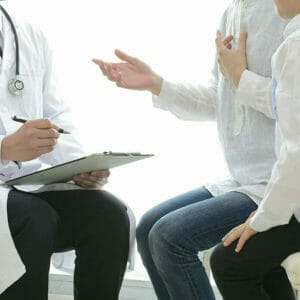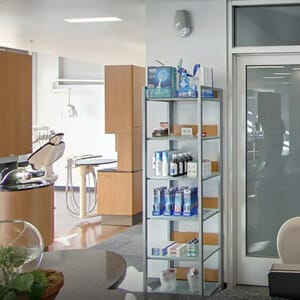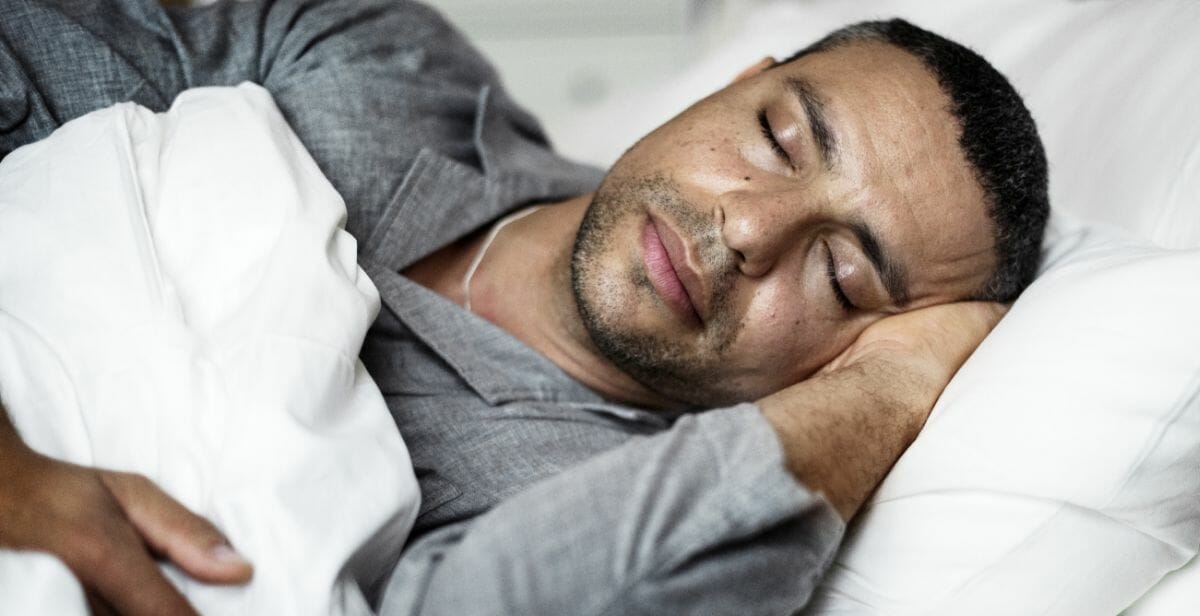Sleep is crucial to overall health and well-being, allowing the body and brain to rest and recharge. It is divided into several stages, including non-rapid eye movement (NREM) stages 1, 2, and 3, and rapid eye movement (REM) sleep, which plays critical roles in physical and cognitive restoration, memory consolidation, and emotional processing.
However, according to American Sleep Apnea Association, about 50 to 70 million Americans have sleep disorders, and about 1 out of 3 adults do not regularly get the recommended hours of uninterrupted sleep needed to protect their health. In addition, chronic sleep deprivation has been linked to various health problems, including cardiovascular disease, obesity, diabetes, depression, and anxiety, highlighting the importance of sleeping well each night.
What is a Sleep Study?

A sleep study, a polysomnogram, is a non-invasive medical test that monitors various physiological functions during sleep to diagnose and evaluate sleep disorders such as sleep apnea, insomnia, narcolepsy, and restless leg syndrome. During a sleep study, electrodes are placed on the patient’s scalp, face, chest, and limbs to measure brain activity, eye movements, muscle tone, heart rate, breathing, and oxygen levels.
A sleep study aims to identify any disruptions in sleep patterns or abnormalities in physiological function that may be causing symptoms such as excessive daytime sleepiness, snoring, or pauses in breathing during sleep. A sleep specialist analyzes the data collected during the study to determine the cause of the patient’s sleep problems and develop an appropriate treatment plan.
Different Types of Sleep Studies
Several sleep studies can be conducted depending on the patient’s symptoms and suspected sleep disorder.
The most common type of sleep study is the polysomnogram (PSG), which involves monitoring brain waves, eye movements, muscle activity, heart rate, and breathing during an overnight stay in a sleep lab.
The multiple sleep latency test (MSLT) diagnoses excessive daytime sleepiness. In contrast, the maintenance of wakefulness test (MWT) evaluates a person’s ability to stay awake during the day.
Home sleep apnea testing (HSAT) is a type of sleep study that can be done in the patient’s home and is used to diagnose sleep apnea.
Finally, the split-night polysomnogram is a combination test that includes an initial PSG to diagnose sleep apnea, followed by continuous positive airway pressure (CPAP) therapy during the second half of the night to evaluate its effectiveness in treating the condition.
Hours of Sleep Needed for a Sleep Study
The amount of sleep required for a sleep study can vary depending on the specific type of study conducted and the requirements of the sleep clinic. Generally, a standard overnight sleep study will require the patient to stay at the clinic for 7 to 8 hours, allowing enough time to monitor brain waves, eye movements, muscle activity, breathing patterns, heart rate, and other physiological parameters during different stages of sleep.
A Split night study combines a Diagnostic and Titration analysis performed when a patient shows signs of severe Obstructive Sleep Apnea. It starts as a Diagnostic Sleep Study, and if the patient shows enough Obstructive Sleep Apnea events within the first 2 hours of sleep, the second part of the split-night test proceeds (the titration study). For the second part, the person will use a CPAP (Continuous Positive Airway Pressure) device while sleeping. This process requires the tech to increase the CPAP pressure until the disordered breathing activity slowly and snoring is corrected.
You will have a sleep study the night before your Multiple Sleep Latency Test (MSLT). For the MSLT to be accurate, you must sleep at least six hours during the sleep study. In addition, a sleep study determines if another sleep disorder, such as sleep apnea, is causing excessive daytime sleepiness. MSLT monitors for excessive daytime sleepiness by measuring how fast you fall asleep in a quiet environment during the day. The MSLT is a full-day test (about 12 hours) that consists of five scheduled naps (for 2 hours each).
It is vital to note that the exact requirements for a sleep study may vary depending on the individual patient’s needs and their healthcare provider’s recommendations.
Factors That Can Affect the Number of Hours Needed
Several factors can affect the number of hours needed for a sleep study. One of the main factors is the type of sleep study conducted. The patient’s age and sleep history can also affect the duration of the sleep study. For example, older adults may need more extended monitoring periods due to changes in their sleep patterns.
Additionally, the presence of certain medical conditions, such as sleep apnea or narcolepsy, may require extended monitoring periods. Finally, the sleep clinic’s protocols and the specific requirements of the healthcare provider may also impact the length of the sleep study.
Thus, it is essential to consult with the healthcare provider to understand the particular needs for a sleep study.
Common Sleep Disorders Diagnosed Through Sleep Studies

Common sleep disorders diagnosed through sleep studies include sleep apnea (obstructive sleep apnea, central sleep apnea, or mixed sleep apnea), restless leg syndrome, periodic limb movement disorder, and narcolepsy.
Sleep apnea is a sleep disorder characterized by interrupted or shallow breathing episodes during sleep, which can lead to various health problems. Uncomfortable sensations in the legs characterize restless leg syndrome, often described as a creeping or crawling sensation that makes it difficult to fall and stay asleep. Periodic limb movement disorder involves involuntary jerking or twitching of the legs or arms during sleep, which can also disrupt sleep. Narcolepsy is a neurological disorder that causes excessive daytime sleepiness and sudden episodes of sleep, often accompanied by loss of muscle control.
Sleep studies, which monitor brain waves, heart rate, breathing, and movement during sleep, can help diagnose these and other sleep disorders.
Treatment Options for Sleep Disorders
Sleep disorders can significantly impact our physical and mental health, making it crucial to seek appropriate treatment. The treatment options for sleep disorders depend on the type of disorder and its underlying cause.
Lifestyle changes such as practicing good sleep hygiene and creating a comfortable sleep environment can significantly treat sleep disorders. Medications, such as sedatives or hypnotics, may be prescribed for insomnia, while continuous positive airway pressure (CPAP) machines can help people with sleep apnea.
Behavioral therapy, such as cognitive-behavioral therapy, can effectively treat sleep disorders related to psychological factors. Light therapy can help regulate the body’s natural sleep-wake cycle and is often used to treat circadian rhythm disorders. Finally, surgery may be necessary to treat sleep apnea, when removing excess tissue in the airway is needed to improve breathing during sleep.
It is important to note that accurate diagnosis of sleep disorders is crucial for effective treatment. Working with a healthcare provider to develop a treatment plan tailored to your specific sleep disorder and individual needs is essential.
Tips for Preparing for a Sleep Study

If you have been scheduled for a sleep study, there are several things you can do to prepare. First, following your healthcare provider’s instructions regarding medication use and dietary restrictions is essential before the study. You should also bring comfortable sleepwear, any medications you need to take, and any comfort items, such as a favorite pillow or blanket. Finally, during the study, trying to relax and sleep as naturally as possible is essential.
Interpreting the results of a sleep study requires specialized training and experience, typically from a sleep specialist. The sleep study report will include information on various physiological functions monitored during the study, such as brain activity, eye movements, muscle tone, breathing, and heart rate. These results will help identify any disruptions in sleep patterns, or abnormalities in physiological function, that may be causing the patient’s symptoms.
Once the study has been completed, the healthcare provider will explain the results to the patient, explaining sleep study results in a way that is easy to understand. The healthcare provider will typically discuss abnormal findings and provide a diagnosis based on the results. The healthcare provider will also develop an appropriate treatment plan based on the findings, including lifestyle changes, medications, or therapy.
Patients need to ask questions regarding the results of their sleep study in order to understand the findings and the implications for their health.
Conclusion
Seeking medical attention for sleep disorders is crucial for proper diagnosis and treatment, as untreated sleep disorders can lead to long-term health consequences. Once diagnosed, sleep specialists can develop individualized treatment plans, including lifestyle changes, medical interventions, or a combination. With proper treatment, individuals with sleep disorders can improve their sleep quality and reduce the risk of associated health problems.
Take charge of your health and well-being! Reach out for a consultation whenever you experience troubles in your sleep.







